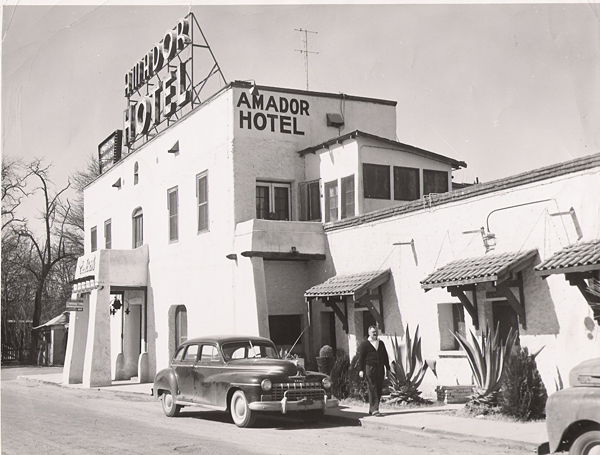History has a way of getting away from us. As a society, we tend to get so caught up in our everyday lives that we forget anything came before us and dispose of anything that we no longer find useful. Mesilla Valley Preservation, Inc., an organization dedicated to preserving the architectural legacy of southern New Mexico, wants to change that perception.
On Saturday, February 15, MVP will present the fourth annual Casas de Antaño Tour of Historic Buildings in Las Cruces. Roughly translated to mean “Houses of Yesteryear,” the Casas de Antaño tour serves as a reminder to the community-at-large that our historical buildings are what define us and set us apart from the rest of the huddled masses.
With a theme of Preservation in Progress, this year’s tour will highlight six projects currently underway in the Mesilla Valley. Participants will be given the opportunity to view the recently re-exposed original courtroom at the old Dona Ana County Courthouse, to learn about large-scale in-progress adobe stabilization work on the Nestor Armijo House, view the latest progress at the Amador Hotel and Phillips Chapel and learn about grassroots community efforts by NMSU faculty, students and the community to document and define a historic district in Mesilla Park.

Notable additions will be original design work by Trost & Trost – the celebrated architectural firm based in El Paso responsible for literally hundreds of buildings in cities throughout the southwest, including Albuquerque, Phoenix and Tucson – at the Mesilla Park School, now the Frank O’Brien Papen Community Center, and the recently revealed Las Cruces Country Club Clubhouse, which will now be incorporated into the development plans for the site.
The tour will grant armchair historians the rare opportunity to step inside these grand old structures and see the work that is underway to bring them back to their original grandeur.
“We’ve been at this as a nonprofit since 2009 and when we started it was kind of hard to see the progress,” said Eric Liefeld, president of Mesilla Valley Preservation. “What we realized, especially over the last couple of years, is that there are a lot of people doing a lot of things related to preservation. It’s sometimes hard to see that, but we really want to focus on it and promote those activities by a bunch of different groups of people.”

To further honor the work being done by these groups and individuals, those making the tour can expect to find representatives on hand at each location to answer questions and discuss the various logistical issues inherent in the project. In a sense, it’s a way for the citizens of the Mesilla Valley to get a firsthand look at how our area is taking back its history.
“As you delve into Las Cruces history, you quickly understand that we’ve lost a great deal of architecture,” Liefeld said. “Urban renewal hit this town in the 60s and 70s and they actually had federal money to knock things down. I think that was sort of shortsighted and most people realize today that it was a tragic thing to have happen.
“Getting back to the topic of the tour, what we’re seeing is a gradual change in attitude and a realization that the architecture is part of what makes a place special and unique. Preserving it is not necessarily a burden, it’s an opportunity to do some very interesting things.”

As a bonus, included in the tour will be a recently discovered collection of 19th century photographs on display at the Nestor Armijo House. According to Liefeld, the photographs were first discovered on Ebay. Further research revealed that they had been found in an attic in Vermont. Purchased by the MVP, they reveal a side of the Valley that has never been seen before.
“They were taken, we think, by somebody coming through the Valley in the 1890s with a camera,” Liefeld said. “They captured some truly unique things, from a very early perspective of the Mesilla Plaza, including the earlier San Albino Church, to a lot of downtown Las Cruces shots. We have 12 of them, so we thought calendar was a pretty appropriate use for those.”
Copies of the calendar, prints and notecards will be available for sale during the tour, as a keepsake.
It’s easy to see why Liefeld and his fellow “history geeks” are so excited by this year’s offerings. Though known for the annual tour, Mesilla Valley Preservation continues its work year-round, not only raising awareness of the importance of historic preservation, but also in doing adobe technology research.

“Adobe is an integral part of our region,” Liefeld said, so understanding some of the “natural forces that are at work on historic adobe structures,” is of paramount importance to the group. Studying such issues as the effects of crystallizing salts due to alkaline soils, is helping them find solutions to the crumbling that can be seen at the base of many adobe buildings.
“It’s important work,” Liefeld said. “It’s something that we tend to take for granted, but when people come here from other places, even say Albuquerque or Santa Fe, they’re often surprised by the interesting things that happened with adobe here. It’s, I think, something that we should focus on and not lose as a construction technique and technology.”
It’s that dedication to understanding and preserving our history that makes tours like Casas de Antaño so special. 19th century artist, writer and socialist William Morris put it best when he said, “These old buildings do not belong to us only, they belong to our forefathers and they will belong to our descendants unless we play them false. They are not in any sense our own property to do as we like with them. We are only trustees for those that come after us.”
The Casas de Antaño Tour will take place from 1 to 5 p.m. Saturday, February 15, 2014. Cost of the tour is $15 per person and tickets may be purchased at any of the buildings on the day of the tour. Each ticket purchased will include a map and a booklet with information on the history of the building, including aspects of construction, preservation and rehabilitation. For more information, visit http://www.mvpres.org.


